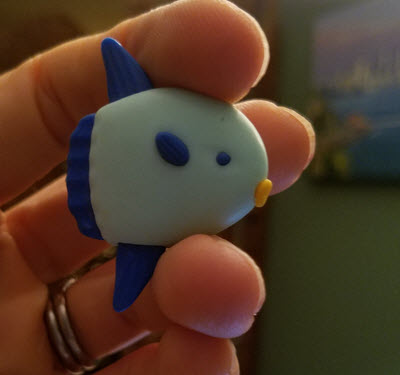by Paula Cassin
One of the 12 Steps to Happiness is:
Experience new things, try stuff out, and let people run all kinds of experiments.
This sounds about right, doesn’t it? New experiences that lie on the edge of our comfort zone is usually where growth is. While I’m all for mastery, eventually you want to “expand the circle” of your comfort zone, ergo, new experiences.
Why and when do new experiences increase happiness?
Tell me if you agree with these:
- They bring you a new perspective, insight. They open the way to changing something.
- They give you a chance to stretch — do something that perhaps you didn’t think you could.
- They can simply renew or rejuvenate your mind, body or spirit.
At Agility Scales, we’re all about experiments and continuous adaptation! So this week, I thought we could run five tiny experiments, taking 5-30 minutes per day (you choose how long), intended to provide you with new perspectives and growth. They’re laid out in a “Guide” format, meaning ‘easily actionable steps.’
I’m hoping these tiny ‘new experiences’ related to increasing happiness in your day, will in turn increase your happiness at work.
First, what we won’t look at: BIG ones, way outside your comfort zone. Life-threatening or altering new experiences. Losing a loved one. Having your house burn down. (Though I believe that even with a major trauma, you’re still in charge of what you make it mean.)
New experience challenges
- Try to keep them small!
- These are experiments. You’re welcome to iterate, adapt, adjust.
- Each takes 5-30 minutes
- Inspire reflection
- You may want to review Monday and line some things up the day before (especially days 1, 3 and 4.)
That’s it! I’m looking forward to doing these.
Day 1: Experience your work environment anew.
1.Bring something tangible and visible — that makes you happy — to work with you. Do you have a memento or item that you cherish? Place it near your workspace so you see it during your day.
Variation: you could also change the images on your phone and desktop background. Choose something that makes you smile and rejuvenate.
Here are the two items I brought in:


2. Make time to experience the happiness you brought with you during your day.You could set an alarm to remind you to stop for a couple of minutes at 11am and 2pm, perhaps, to have a look at your items. Research shows that generating positive thoughts or recalling happy memories helps to strengthen the optimism circuits in your frontal lobe. (Neurowisdom, by Mark Robert Waldman, Chris Manning Phd, Chapter 7).
3. Next, view your work environment with new eyes.What’s in your immediate surroundings? Could you make it a happier place to be?
4. Experiment with small changes.Are there any small changes you could make that would give you a new perspective or renew/refresh your environment?
Day 2: Experience a new perspective on a problem.
Let’s explore our worries in a new way. If you’re stuck or not getting the outcomes you’re after — and most of us can relate in one area of our lives at least, right? — it’s time to experience them in a new way. This exercise will shift your perspective.
1.Relax and grab some paper. Grab two sheets of paper and a pen, and relax. Take some deep breaths and stretch out your torso and arms, as slowly as possible.
2. Pick a problem. Now that you feel relaxed, think about a problem or worry you have. Pick one that’s recurring — something that keeps sticking around. I bet that there’s some recurring behavior or situation that you just can’t seem to change. Maybe it’s eating healthy. Maybe it’s the stress (and swear words) that happens every time you’re driving and encounter the unexpected. Maybe it’s the feeling of disconnect with a work colleague. Maybe you’re immobilized thinking about your next career move. Pick something that’s bothering you, impacting your life, and you don’t know how to resolve.
3. Describe the Problem. Now, start writing what the situation is like today. What does it feel like? What happens? How do you act? How do others act? You could describe the pattern that emerges, or what happened in the past.
4. Describe the Impact. Turn the paper you’re using over. What is the impact? What is your life like with this problem? Do you benefit in any way from it? Don’t worry about getting the answers to these questions right — just write down what comes up, even if your brain is telling you it’s unreasonable. Steps three and four should be somewhat easy (albeit uncomfortable), since you’re already spending time with this problem! Brainstorm any and everything related to this problem and write it down on this sheet of paper. I’d suggest spending about five minutes on this.
5. Relax. Now, relax again! Take some slow breaths, stretch in slow motion for 30 seconds. (This gets some resourceful parts of your brain engaged again).
6. What could/should you do? On the second sheet of paper, start writing possible actions you could take, solutions to your problem. What have you tried already? What would be the sensible thing to do? What would society say you ‘SHOULD’ do?
7. Crazy, Funny, Hero. Now take it further — you need to tap into your creative mind. Answer questions like these: What would be the craziest thing you could do? What would be the funniest thing to do? The dumbest thing to do? What would Wonder Woman/Batman do to solve this problem? What would [insert name of someone you admire] do to solve this problem? What would your three-year-old do? What would be the littlest thing you could do? The most expensive thing? Keep going until you have written down at least 25 actions you could take.
8. Reduce. Choose an Experiment. Now, review your list and cross off the ones you’re not willing to consider right now, for whatever reason. What’s left? Can you pick one to experiment with? Is there at least one small action you’re willing to try out?
9. Reflection. OK, now check in with yourself. How do you feel about this problem now? Do you feel different? Most people feel much, much better — the problem feels smaller and solutions feel closer. And the pressure is less. In this case Yoda may be wrong — giving yourself permission to try can help you get started.
I’ve done this exercise recently on eating healthy — losing weight, as you may have heard on the Podcast recently. I didn’t hire a personal chef or fast for a week, but I did shift to frozen grapes after dinner, prepping my lunches the day before, listening to the Plant Paradox on Audible, and deliberately enjoying my meals more. Because of it, I’m happier and eating much healthier…and 5 lbs lighter.
This exercise was inspired by Mark Robert Waldman’s Conflicts, Resistances, Anxieties, Procrastination C.R.A.P. Board Technique. One last tip from Mark (paraphrased):
Some people believe that writing down their “crap” will make it manifest in the world. Nothing can be farther from the truth. Put your writing on the wall where you can see it regularly during the day. BUT DO NOT THROW IT AWAY! If you do, your unconscious mind will start to ruminate on all that negativity. When it’s on a sheet of paper, there is a neural “disconnect,” as if your brain knows that your crap is safely captured.
Day 3: Experience a new conversation.
So many of our connections with others are superficial, especially at work. But there’s potential for new experiences and expanding your perception of others, hiding in plain sight. It only takes a question or two to someone you know.
For example, my mother-in-law is a lovely, soft-spoken woman. But when she told me the story of how she had to cope after her husband died co-piloting a flight over Antarctica (no survivors), becoming the breadwinner, raising three children on her own ages 6, 9 and 13, while also defending her husband’s reputation in the face of an airline determined to blame the pilots…that completely transformed my understanding of who she was.
Hearing her story made me understand how strong she is and also helped me understand her worldview. It also put some of my own worries in perspective and made me grateful for all the blessings I have.
After college, I had a great time living in Paris with my housemate and fellow graduate Rosette. I vividly remember during dinner, after having known each other for half a year, discovering that my college roommate had a family history completely different than mine: Her mother had fled Vietnam with her and her two sisters during the Vietnam War, first to France and then to the United States, where they had to start all over again. I knew Rosette as a smart, capable adventurous young woman, and had no idea she’d lived through such upheaval as a child.
I could go on and on — a work client who told me about his life caring for his mentally handicapped 25-year-old son, a school friend who related having to give up the job of a lifetime when hit with a debilitating illness and having to learn to walk and talk again. Can you think of people you know with experiences that have amazed you?
Challenge for today:
1.Organize to have coffee or lunch with a colleague or acquaintance, someone you like but aren’t close friends with. If you’re remote, call them or write.
2. Find out more about them! Perhaps ask the a question like:
- What was one of the toughest times of your life?
- Did you ever have a moment that helped shape you into the person you are today?
- Was there ever an experience that shifted your world view? What was it?
- What was it like growing up in your family?
- Who has had the most influence on creating you as a person?
3. Be a good listener and focus on learning more about them.
4. Make sure you are sharing too, so that it doesn’t feel like an interrogation. If you show some vulnerability, deeper connections are possible.
Through my research, I found that vulnerability is the glue that holds relationships together. It’s the magic sauce.
Brene Brown
5. Thank them. An hour or day after your conversation, send this person a thank you.
Day 4: Change of Routine.
What does your routine look like at work?
1.Think about your routine. What’s the flow of your workday like? List out your routine in chronological order.
2. Change your routine. Find a tiny, easily implemented new experience. Here are some ideas:
- Park 2 blocks away and walk to your office. If you work from home — walk to the corner and back.
- Get your coffee somewhere new.
- Get to work 30 minutes earlier. Or later.
- Skip lunch/leave the office for lunch.
- Drive the long way. Detour to go past that beautiful pagoda in the middle of the neighborhood.
- Appreciate something you normally don’t.
3. Which routine makes you happier? Maybe it was good, maybe it wasn’t. Reflect.
Day 5. A new reflection.
On Day 5, we’ll experiment with the power of reflection.
- Out of the four challenges (or the ones you chose to do), how did they go?
- What went well?
- New Perspectives?
- Stretch?
- Renewal?
- Keep, Stop, Start.
What new experiences have you, err, experienced? Tell us about it in the comments below!

